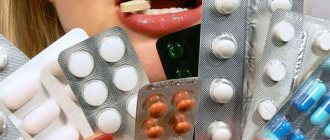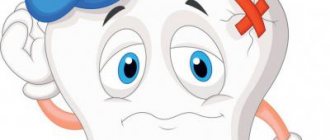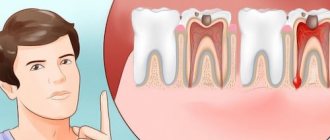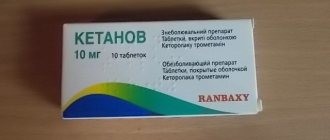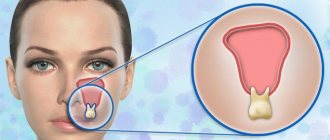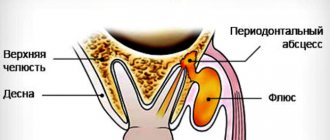Prohibited during pregnancy
Prohibited during breastfeeding
Has restrictions for children
Has restrictions for older people
Has limitations for liver problems
Has limitations for kidney problems
Toothache is one of the most unpleasant sensations and, unfortunately, no one is immune from it. Today, due to the environmental situation, poor quality food and water, it is difficult to keep teeth in perfect condition for a long time. One way or another, each of the people experiences dental pain, so it is necessary to undergo regular preventive examinations.
But what to do if a tooth starts to bother you at the most inopportune moment, and going to the dentist is not possible right now? There are many remedies that will help you cope with pain before going to the clinic. One of the most popular analgesics is Spazmalgon, so it is important to figure out whether it helps with toothache and how to use it correctly in this case.
Does Spazmalgon help with toothache?
The drug helps with toothache. Spazmalgon is part of the group of analgesics with a pronounced antispasmodic effect. The medicine has a combined composition and is therefore prescribed for pain syndromes of various origins.
The analgesic effect is provided due to the anti-inflammatory properties of the active ingredients. The substances that make up Spazmalgon reduce the sensitivity of pain receptors. In view of this, the medicine can be used for any acute pain, including dental pain.
How long does it take for the medicine to work?
The action of Spasmalgon develops quite quickly. On average, the tablet is absorbed within 25-40 minutes . The severity of the analgesic effect depends on the intensity of the pain and the dose taken. The effect lasts for an average of 4 hours.
Spasmalgon®
When treating children and patients receiving cytostatic drugs, treatment with the drug should be carried out only under the supervision of a physician.
An increased risk of developing hypersensitivity reactions to metamizole sodium, which is part of the drug, is caused by the following conditions:
- bronchial asthma, especially in combination with polypous rhinosinusitis;
- chronic urticaria;
- alcohol intolerance (increased sensitivity to alcohol), against the background of which, even when taking a small amount of certain alcoholic beverages, patients experience sneezing, lacrimation and severe redness of the face. Alcohol intolerance may indicate previously unidentified aspirin asthma syndrome;
- intolerance or hypersensitivity to dyes (for example, tartrazine) or preservatives (for example, benzoate).
Before using the drug, it is necessary to conduct a thorough interview with the patient. If a risk of developing an anaphylactoid reaction is detected, use of the drug is possible only after a full assessment of the risk/benefit ratio.
If the drug is used in such patients, strict medical monitoring of their condition is necessary and the availability of means to provide them with emergency assistance in the event of the development of anaphylactic/anaphylactoid reactions is required.
Predisposed patients may experience anaphylactic shock, so patients with asthma or atopy should use the drug with caution.
Life-threatening skin reactions such as Stevens-Johnson syndrome and toxic epidermal necrolysis have been described with the use of metamizole sodium. If symptoms of these diseases appear (such as a progressive skin rash, often with blisters or lesions of the mucous membrane), treatment with the drug should be stopped immediately and should not be restarted.
During therapy with metamizole-containing drugs, agranulocytosis may develop. It lasts at least a week, does not depend on the dose, can be severe, life-threatening and even lead to the death of the patient. In this regard, if symptoms possibly associated with neutropenia appear (fever, chills, sore throat, difficulty swallowing, stomatitis, erosive and ulcerative lesions of the oral cavity, vaginitis or proctitis, a decrease in the number of neutrophils in peripheral blood - less than 1500/mm3), it is necessary to stop treatment and consult a doctor.
If the patient receives antibiotic therapy, then the typical manifestations of agranulocytosis may be minimally expressed. The erythrocyte sedimentation rate is significantly increased, while lymph node enlargement is mild or absent.
Typical symptoms of thrombocytopenia are an increased tendency to bleeding and the appearance of petechiae on the skin and mucous membranes.
In case of pancytopenia, treatment should be stopped immediately; complete blood count parameters should be monitored until they return to normal.
All patients should be aware that if symptoms of a pathological change in the blood (for example, general malaise, infection, persistent fever, bruising, bleeding, pale skin) appear while using the drug, they should immediately consult a doctor.
Administration of a metamizole-containing drug may cause individual hypotensive reactions. These reactions may be dose dependent and occur more often after parenteral administration.
To avoid the development of severe hypotensive reactions, you should adhere to the following recommendations:
- blood pressure, heart rate and breathing should be monitored;
- patients with existing hypotension, decreased circulating blood volume, dehydration, hemodynamic instability or with the initial stage of circulatory failure require normalization of hemodynamics;
- Caution should be used when treating patients with high body temperature.
In patients who should avoid lowering blood pressure (for example, with severe ischemic heart disease or cerebral stenosis), therapy should be carried out only with careful hemodynamic monitoring.
During treatment with the drug you should refrain from drinking alcohol.
It is unacceptable to use the drug to relieve acute abdominal pain (until the cause is determined).
In patients with impaired liver or kidney function, it is recommended to avoid the use of the drug in high doses due to a decrease in the rate of elimination of the drug.
Compound
Spasmalgon is a combination drug.
The composition includes the following components:
- Metamizole sodium. A substance with anti-inflammatory properties of the non-steroidal group. It is characterized by a pronounced analgesic and anti-inflammatory effect. The component prevents the secretion of substances responsible for the formation of the inflammatory response, which in turn leads to a decrease in pain sensitivity in the affected area.
- Pitophenone hydrochloride. Antispasmodic component of the drug. The substance reduces smooth muscle tone. This helps relieve pain caused by spasms.
- Phenpiverinium bromide. It is an anticholinergic substance that has an antispasmodic effect. The component helps relax smooth muscles, thereby enhancing the analgesic effect.
The described components interact with each other, thereby enhancing the effect, which will help with toothache and also relieve pain after tooth extraction. Auxiliary components include gelatin, starch, magnesium stearate.
Composition of drugs, its effects and release form
The effectiveness of the drug is ensured by the combined composition. The main effects of taking the drug spasmalgon, the instructions for use indicate this, are a pronounced analgesic and antispasmodic effect. Additionally, the medicine lowers body temperature. You need to know what spasmalgon helps with in order to use it correctly.
The peculiarity of the effects of using the product is associated with the following properties of the main components:
- Metamizole sodium effectively relieves pain, lowers body temperature and reduces inflammation.
- Pitophenone hydrochloride has a direct myotropic effect, providing an antispasmodic and vasodilating effect, which helps relieve discomfort.
- Enhances the relaxing effect of the drug fenpiverinium bromide, which belongs to the group of M-anticholinergics.
A special feature of spasmalgon is the high speed of obtaining results. When taking tablets or performing an injection, it is possible to relieve pain in no more than 40 minutes. The number of main components differs in different forms.
You can purchase spasmalgon, which has a combined composition, in a cardboard box in two forms:
- Tablets in blisters.
- Ampoules for injection.
Indications for toothache
The use of Spazmalgon is advisable for a wide range of pathological phenomena accompanied by toothache.
Indications include:
- Increased sensitivity of teeth (due to violation of the integrity of the enamel)
- Formation of carious lesions
- Development of pulpitis against the background of caries
- Periodontal inflammation
- Infectious lesions of the periosteum
- Trigeminal nerve lesions
- Jaw injuries accompanied by toothache
Important to remember! Spazmalgon is used as an emergency remedy to relieve toothache. The medicine does not provide a long-term analgesic effect, since it does not relieve the cause of the pain syndrome.
Analogs
Today, there is a large selection of medications for dental pain among non-steroidal analgesics. The most common are:
Analgin is the most affordable analogue of Spazmalgon. Available without a prescription and at an affordable price. However, it is effective only for mild pain, which even dental drops can cope with.- Ibuprofen not only copes with pain, but also has an anti-inflammatory effect, therefore it is also used as a prevention of complications after tooth extraction.
- Diclofenac is able to fight even severe pain and inflammation.
- Ketanov is a potent drug based on ketorolac. Despite the strong and rapid effect after taking this drug, it has a number of disadvantages. This drug is not only expensive, but is also sold exclusively with a prescription from the attending physician, which makes the medication inconvenient if the tooth hurts at night.
Instructions for use
Spazmalgon is also available in ampoule format.
Taking any medications, especially analgesics, should be carried out in accordance with the instructions.
Detailed instructions are included with the medicine. Before taking it, it is important to make sure there are no contraindications or other possible restrictions.
Rules for taking Spazmalgon:
- If acute toothache occurs, take 1 or 2 tablets
- Tablets are taken orally
- The medicine should be taken with a sufficient amount of water
- It is forbidden to chew or dissolve Spazmalgon in the mouth.
Reference! If the patient is unable to fully take the medicine in tablet form, it can be replaced with an analogue in the form of an injection solution.
Dosage
To eliminate toothache, it is enough to take 1 or 2 tablets. The dosage is prescribed in accordance with the intensity of the pain syndrome and the suspected cause of its occurrence. For severe toothaches, it is recommended to take 2 tablets to completely get rid of the disease.
During the day, the patient is allowed to take no more than 6 Spazmalgon tablets. Thus, let's take 2 tablets three times a day. Between each dose there should be approximately the same time period.
With intense inflammation, the effectiveness of the described medicine may decrease. In this case, you should immediately seek dental care.
Important! Spazmalgon is not intended for long-term use. It is recommended to take the medicine no longer than 3 days. Otherwise, the risk of side effects increases.
Contraindications
More advantageous packaging – 50 Spazmalgon tablets.
Absolute contraindications include the following:
- Individual hypersensitivity
- Intestinal obstruction
- Functional gallbladder disorders
- Kidney or liver failure
- Pregnancy and lactation
- Leukopenia
- Anemia
- Severe respiratory tract diseases
- Cardiac disorders (arrhythmias, tachycardia)
- Age limit (children under 5 years old)
The drug is not recommended if the pain syndrome is of unknown origin and can be caused by serious illnesses requiring urgent surgical intervention.
The simultaneous use of Spazmalgon and any alcoholic beverages, sedatives, or medications containing Metamizole is strictly prohibited.
Contraindications and side effects
A direct contraindication to taking spasmalgon is hypersensitivity to all components of the drug. The product should not be used during pregnancy and lactation, as well as for children under 6 years of age. Other contraindications are indicated in the instructions for use of the medicine
Side effects with a single dose are rare. This may include nausea, dizziness and increased blood pressure. With prolonged use of the drug, the risks of disruptions in the urinary and hematopoietic systems increase. An overdose of the drug can provoke dangerous allergic reactions. If this happens, it is necessary to rinse the stomach, induce vomiting, and take absorbents.
Admission in childhood
In the form of tablets, Spazmalgon is allowed to be taken by children over 5 years old. The dosage regimen depends on the age of the child.
Method of administration in childhood:
- From 5 to 9 years – 1 tablet 2 times a day
- From 9 to 12 years – 1 tablet 3 times a day
- From 12 to 13 years – 1 tablet up to 4 times a day
- From 13 years – 1-2 tablets up to 6 tablets per day
It is recommended to consult a pediatrician before use. The duration of therapy should not be longer than 3 days. At least 6 hours should pass between each dose.
Use during pregnancy
During the period of bearing a child, taking Spazmalgon is prohibited. The drug is considered most dangerous in the 1st trimester, as it can provoke abnormalities in the development of internal organs.
Clinical studies refuting or confirming harm to the fetus in the 2nd and 3rd trimester have not been conducted. Taking Spazmalgon is not recommended during breastfeeding. The active components are characterized by increased penetrating ability, as a result of which they can enter the baby’s body through breast milk.
If necessary, when taking Spazmalgon, lactation is interrupted. Feeding may be resumed 48 hours after the last pill intake.
Admission rules
The dosage of the medicine for the treatment of various diseases is prescribed by the doctor. They depend on the age of the patient and the form of the drug. Spasmalgon tablets, the price of which is affordable, can be taken by adult patients once in an amount of no more than 2 pieces. You are allowed to take no more than 6 tablets per day. Allowable treatment time is 5 days. Its extension is possible only after consultation with a doctor.
Children can take the medicine no more than 2 times a day only as prescribed by the doctor. The recommended dosage for age is indicated in the instructions.
Intramuscular injections to adult patients are given 2-3 times, 2-5 ml of solution. The procedure involves slowly administering the medication. The permissible daily dosage is 10 ml. The maximum duration of treatment is 5 days. The permitted quantities of medicinal solution for children are indicated in the instructions.
Advantages and disadvantages
Spazmalgon is characterized by the following advantages:
- Convenient release form
- Pronounced analgesic effect
- Long lasting
- Possibility of repeated admission within 3 days
- Possibility of admission in childhood
- Highly effective for pain syndromes of various origins
Unfortunately, despite the large number of advantages, the medicine has a number of disadvantages. The most significant include a wide range of contraindications, which is why not all patients can use this medicine. In addition, taking the medication can cause unpleasant side effects.
These include:
- Heartburn
- Dry mouth
- Nausea and vomiting
- Dizziness
- Shortness of breath
- Tachycardia
- Change in urine color
- Allergic skin rashes
- Anaphylactic reactions
The potential for side effects indicates the need for strict adherence to dosages and timing of administration.
Cost and analogues
The price of the drug Spazmalgon varies depending on the manufacturer and the number of tablets in the package. The cost of a package of 10 tablets is 136 rubles . The price for 20 tablets is from 144 rubles , and for 50 tablets – from 300 rubles .
If necessary, Spazmalgon can be replaced with a drug with a similar effect. The most popular analogues are presented in the table.
| Name | Price | Short description |
| Spazgan | 249 rubles per pack of 100 tablets | It is a direct analogue of Spasmalgon. Has identical active ingredients. It is used for various pain syndromes, including to eliminate toothache. |
| Took | 51 rubles per pack of 10 tablets | Antispasmodic based on Metamizole in combination with Pitophenone hydrochloride and fenpiverinium. It has a pronounced analgesic, antipyretic and anti-inflammatory effect. |
| Maxigan | 326 rubles per pack of 100 tablets | Antispasmodic drug with similar active ingredients. It is used for dental headaches, syndromes caused by inflammatory processes in tissues, rheumatism, injuries, postoperative pain. |
| Spasmalin | 118 rubles per pack of 20 tablets | Direct analogue of Spazmalgon. Has pronounced analgesic activity. Allowed to take up to 4 times a day. |
| Spasmoblock | 105 rubles per pack of 20 tablets | Prescribed to relieve pain caused by smooth muscle spasms and inflammatory processes. It is advisable to take for mild or moderate syndromes. |
Mechanism of action and rules of use for toothache
Spazmalgon is a combination drug, and each of its active components enhances the effect of the others. Despite the fact that the medication belongs to the group of antispasmodics and affects smooth muscles, it contains metamizole sodium, which is an analgesic and affects the synthesis of prostaglandins in the body.
It is prostaglandins that are involved in biochemical reactions that are interpreted by the brain as pain. Pitophenone hydrochloride has a direct effect on smooth muscles, relaxing them, and also enhances the analgesic effect of the other two active ingredients. Thus, each substance complements the other, enhancing properties and prolonging the period of action.
Pharmacological action of Spazmalgon
Despite the fact that there is no muscle tissue in the teeth, Spazmalgon is able to relieve this pain syndrome. Since this particular pain is characterized by irradiation of pain into the head, ear and throat, which leads to painful pulsations in these organs. The simultaneous action of the drug substances relaxes the muscles and slows down the transmission of impulses, thereby relieving the symptom or making it less pronounced.
Take the drug orally, without chewing and with plenty of water. The course of treatment should not exceed 3 days, and the break between doses of the drug is at least 4 hours.
The dosage is calculated as follows:
- Adults can take 1-2 tablets at a time. The maximum daily dose should not exceed 6 tablets.
- Children aged 12-15 years should not take more than 4 tablets per day, 1 tablet at a time.
- Children from 8 to 11 can take half a tablet, but no more than 4 times a day.
- Spazmalgon is allowed for children from 5 to 7 years old, but in a minimal dosage (0.5 tablets 2 times a day).
Reviews
In this section you can read user reviews about the drug Spazmalgon, the advantages and disadvantages of taking the presented drug, and effective analogues.
Spasmalgon is a potent combination drug that has a pronounced analgesic effect. The drug is prescribed to eliminate pain of various origins, including toothache. Administration must be carried out in full accordance with the prescribed dosages, taking into account the patient’s age, pain intensity, and possible contraindications.
